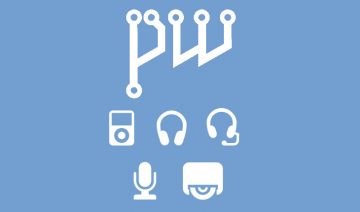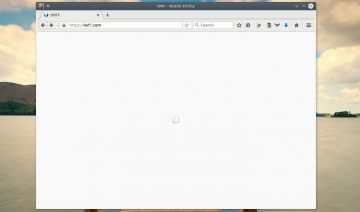In the vast majority of user comments, a positive notion is definitely felt. Users who loved GNOME in its previous version aren’t likely to switch camp overnight. And yet, alongside those who praise the D.E. there are also those who criticizes it.
Before we delve into the burning topics many users have brought up in regards to this release and GNOME in general, let’s quickly go over the new features introduced by GNOME 3.24.
GNOME 3.24 Notable Features
- Night Light – a new feature that changes the color of your displays according to the time of day.
- Updated Settings – 3 areas of the Settings application have seen design updates: Online Accounts, Printers and Users.
- New Recipes application – a new application intended as a community project, the application contains a collection of recipes contributed by GNOME community members.
- Improved Notifications area – the notifications list now has clearer layout, Weather information has been integrated into the notifications area.
- Improved Web browser – GNOME browser, simply known as “Web”, saw a number of significant design improvements: a new address bar resolves a number of usability issues in the previous design, a new popover shows a list of open tabs, bookmarks has been overhauled.
- Improved Photos view – thumbnails in “Photos” application are now bigger and resize to fill all the available space, GPS location information can now be seen for photos that have it.
- More games support – Games application which lets you play a variety of retro games has gained support for Libretro and the ability to play games that rely on it.
- Enhanced icons – GNOME’s icons were enlarged and are now more detailed on high density displays. Also, some of the icons had been overhauled.
Aside from the new Recipes application, the rest of the list, as you can see, is comprised of fine-tuning / refinement of existing applications, which indicates that in this release GNOME D.E. has reached maturity level that requires no ground breaking changes.
Moreover, it indicates that GNOME 3.24 leans over towards the stability side and less towards the renovation side of things. So people who are satisfied with the current state of GNOME should therefore feel more comfortable upgrading to the latest version while people who expected changes might find it a good time to graze in other fields.
What Users Think About GNOME 3.24?
Back to our main subject, the reception of GNOME 3.24 appears to be mostly positive among its crowd base, although there are a few areas that deserve some attention.
The Good
“Gnome’s peculiar design is very impressive. CSD is a nice and elegant idea. …”
CSD for those unfamiliar with the term means client-side decorations which is basically a short, fancy way of referring to application windows’ title-bar, close buttons, borders, resize grips, etc…
In this case, the user is referring to a feature which has been long-time part of GNOME 3 that lets applications utilize the area which was traditionally used by title-bars, thus saving some vertical window space.
Although, on the other hand, some users might argue that instead of saving space, GNOME’s Headerbars (the name given to GNOME’s CSD integrated title-bar) are very big thus beating the purpose of which they were meant for.
“Seems really polished! Gnome keeps on getting better and better!”
Over its long course of development (more than 5 years ago) I’ve personally witnessed the vast attention GNOME invest in tiny details, from slogans such as: “Every Detail Matters” to “Give a detail this Christmas” GNOME certainly has put lots of effort into focusing on details.
The old adage “God is in the detail” certainly seem to be reflected in GNOME’s view here and users are noticing it too.
This user seems to be pleased with the current GNOME version and sees version 3.24 as an improvement of it.
“This is awesome. Gnome community knows how things should be done.”
The last example of a good thing users had to say about 3.24 is referring to the way GNOME designs it’s desktop environment, not necessarily physically but from a philosophical point of view.
Since the release of GNOME 3.x series, GNOME always seemed to have a design goal the developers aspire to reach, some would describe that goal as being a hybrid environment that fits both desktop and mobile devices, others might reduce the focus to individual applications such as, for instance, Files (Nautilus) the file manager is designed to properly accommodate its users needs.
Apparently, in this user point of view, be it in the smaller or broader scale, GNOME design certainly answers the required needs.
The Needs To Be Improved
“By looking at the progress made between releases, one would think that the entire gnome project is comprised of 1 developer working part time.”
The user is referring to the fact that there aren’t any highly exciting features introduced in the latest release and therefore, he or she appears to be somewhat disappointed.
As mentioned earlier in this article, the lack of new ‘explosive’ features probably stems from the fact that in GNOME developers’ view, the D.E. has reached a level of maturity where most of the features aimed to be achieved had already been implemented.
Nevertheless, as recent polls suggests, GNOME is still far from catering to the majority of Linux users needs, and it’s possible that they no longer aim to do so either.
“… why would u put your focus on cooking recipes there is so many more important things”
The user isn’t satisfied with GNOME’s current features supply, and again criticizes GNOME efforts of focusing on marginal issues while there are more central and burning issues that screams to be dealt with first.
“… I get it. There was no feature left to remove. Maybe in the next release they can manage to remove the ability to view files, maybe? It will be a fantastic design improvement.”
If we ignore the sarcasm tone of the comment, we can notice that there’s a recurring theme here.
Once again, this is the same basic complaint that rises up in different forms, yet the truth to the matter is, that this same complaint has been raised over and over throughout the entire life cycle of GNOME 3.x series. So far unfortunately, GNOME as yet given it a satisfying answer.
And to be more specific about the complaint, according to user comments – GNOME appears to be feature-lacking. Perhaps, therefore, it’s time that GNOME start putting less emphasis on details and shift their focus towards features requested by users.
Do you agree or not? tell us what you think in the comments below.











